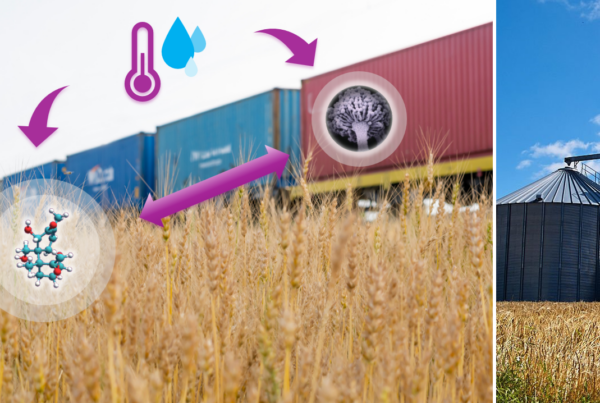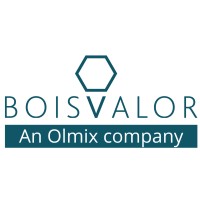Olmix Animal Care was involved in the recent All About Feed Webinar on Mycotoxins.
The latest trends and solutions for mycotoxin control were addressed at the recent All About Feed Webinar on Mycotoxins (Tuesday, 22nd February), which succeeded to bring together dozens of experts from the livestock industry looking for useful updates to face mycotoxin risk related consequences on the farm.
Olmix, represented by For Feed Product Specialist Julia Laurain, was involved in such a unique digital meeting to shed light on the recent research by Olmix on mycotoxins transfer and the positive effects of the Algoclay Technology to reduce mycotoxin absorption.
The risk of mycotoxins
It can be said that the mere presence of mycotoxins on the farm presents itself a risk for animals and has a relevant impact on the technical and therefore economic performance of livestock, as it was well explained by Laurain:
“When we talk about the presence of mycotoxins, we usually think about high contamination rates. However, even low and medium contamination are a major threat for animal’s health and performances. The diverse problems that may occur because of mycotoxins involve several risks for animal health since there is higher sensitivity to infections and even vaccines can be affected.”
According to the expert, it is of utmost importance to have the right tools to cope with any issues related to mycotoxin risk. That’s one of the reasons why “a wide spectrum toxin binder is always a must as mycotoxins are always present in polycontamination scenarios.”

Julia Laurain (Olmix Group).
New published data on mycotoxin transfer and accumulation
With Olmix having recently published a new peer-reviewed article on the transmission of ZEN and DON from sows to piglets, it was only natural to describe the insights of this research that the company has made along with Schothorst Feed Research center (Netherlands) and the Federal Research Institute for Animal Health (Germany).
“The aim of this study was to evaluate mycotoxin transfer (ZEN & DON) from sows to piglets with low mycotoxin contamination levels and to evaluate the interest of the in-feed supplementation of the Olmix mycotoxin decontaminant based on Olmix Algoclay technology (combining algae and clay) to protect sows and piglets. The results were just outstanding.”
In fact, the study proved that the Olmix’s decontaminant was successful to reduce ZEN and DON levels in milk and serum, as well as ZEN concentration in sows’ serum. Besides, this technology demonstrated its efficacy to reduce ZEN and DON concentrations in the piglet’s serum after 26 days of lactation.
“This research showed the efficacy of Olmix decontaminant to protect both sows and piglets from ZEN and DON contamination. Therefore, we can say that the Olmix’s decontaminant may avoid impaired performance caused by early mycotoxin exposure of piglets even at low levels of contamination. These results complete the long list of proofs of efficacy for Olmix decontaminant carried out in experimental research institutes against the major mycotoxins found on the field.”

Algoclay Technology to reduce mycotoxin absorption and accumulation
A second study by Olmix has recently seen the light: in 2019, Olmix initiated a long-term research program with Professor Philippe Guerre from the Veterinary School of Toulouse (ENVT, France) in which the deposit of fumonisins in broiler tissues was investigated, with or without feeding Olmix Algoclay technology.
“This study is the first one ever demonstrating a deposit of fumonisins in broiler tissues. This study also showed that feeding the Olmix Algoclay technology reduced the accumulation of fumonisin B1 by around 40% in the liver and by 50% in the meat,” Laurain said.
So, the use of this Algoclay Technology permits to reduce mycotoxin absorption and thus accumulation, being considered a proved tool to face mycotoxin challenges. “We have some excellent results obtained with this Algoclay technology. We have carried out several trials in all species to test the efficacy of these patented technology under specific experimental conditions. Results show that this technology successfully helps to mitigate these effects and permits animals to fully recover.”





